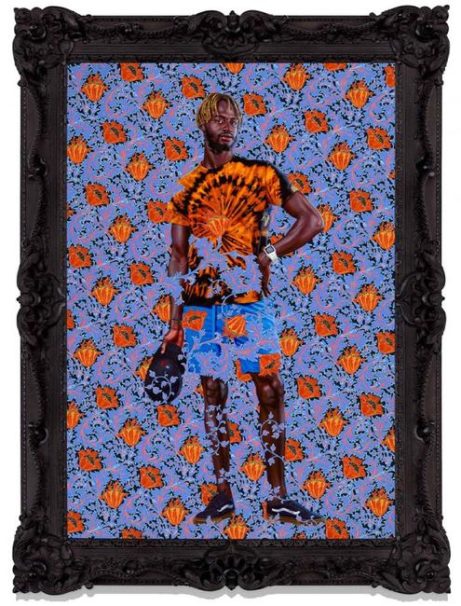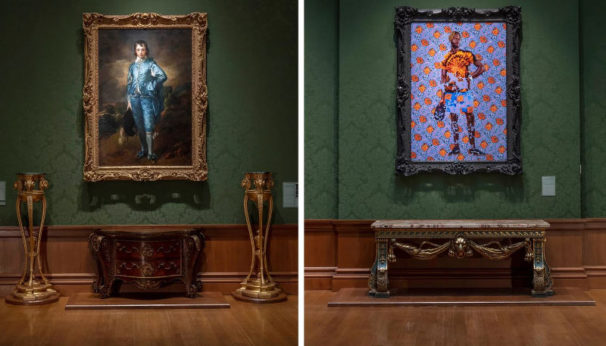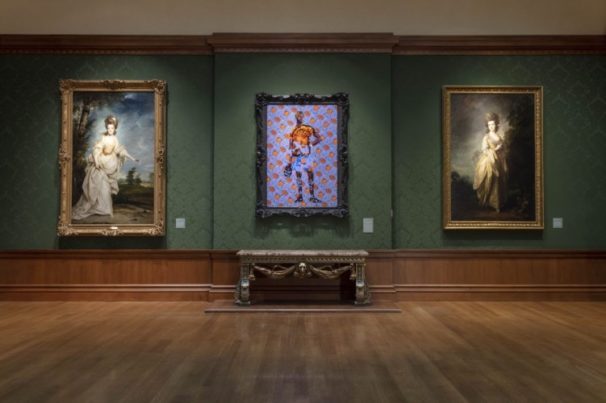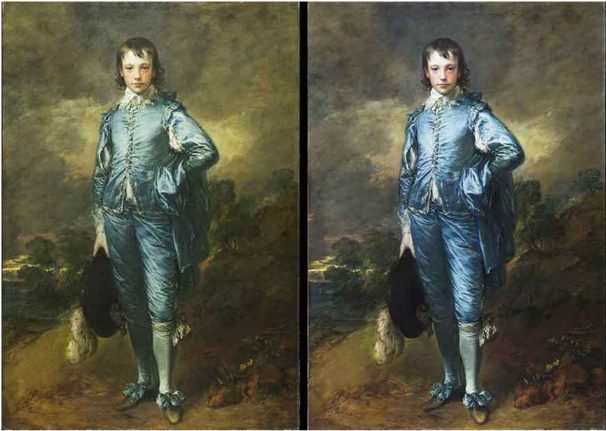
Funny … they don’t look Blueish. But both are dandies. And there they are, well hung, in Huntington Library, Art Museum and Botanical Garden‘s Thornton Portrait Gallery. Two young gents, eye-balling each other (flirting?) Bear in mind that Thomas Gainsborough’s iconic painting, The Blue Boy (ca. 1770), has hardly been lonely. Ever since railroad tycoon Henry E. Huntington purchased the painting in 1921 for $728,000 — the highest price ever paid for a painting at the time — a traipse of visitors has been checking him out pretty much nonstop. (It’s a serious thrill to stand before the Gainsborough canvas.) First shown at a Royal Academy exhibition in 1770 as A Portrait of a Young Gentleman, by 1798, the portrait had a nickname that stuck: “The Blue Boy.” Now Mr. Azure-in Shiny-Silken-Togs has a friend. In celebration of one hundred years of being Blueish in San Marino, the Huntington commissioned American artist Kehinde Wiley, for a contemporary take on The Blue Boy. Mr. Wiley’s work, A Portrait of a Young Gentleman, looks just fantastic in his new home.
Inspired by The Blue Boy, and using the original title of Gainsborough’s painting, Wiley’s Portrait of a Young Gentleman is a large-scale work in the Grand Manner style. Wiley has long talked about the role The Huntington played in his formative years as an artist growing up in Los Angeles. When he was young, his mother enrolled him in art classes at The Huntington, where he encountered a formidable collection of British Grand Manner portraits—monumental depictions of England’s 18th- and 19th-century noble class. The portraits made such an impression on Wiley that he would later incorporate their stylistic representations of wealth, glory, and power into his own artistic practice, focusing on the Black and brown bodies missing from the museums he visited.

I loved The Huntington’s galleries; the paintings by Joshua Reynolds, Thomas Gainsborough, and John Constable were some of my favorites. I was taken by their imagery, their sheer spectacle, and, of course, their beauty. When I started painting, I started looking at their technical proficiency—the manipulation of paint, color, and composition. These portraits are hyperreal, with the detail on the face finely crafted, and the brushwork, the clothing, and the landscape fluid and playful. Since I felt somewhat removed from the imagery—personally and culturally—I took a scientific approach and had an aesthetic fascination with these paintings. That distance gave me a removed freedom. Later, I started thinking about issues of desire, objectification, and fantasy in portraiture and, of course, colonialism.
Kehinde Wiley, artist

Gainsborough’s command of color and mastery of brushwork are on full display in the painting, made even more apparent as a result of the conservation and restoration of this priceless portrait in an 18-month initiative and exhibition.

The Huntington Library, Art Museum, and Botanical Gardens
The Huntington acquisition of the Wiley portrait is a commentary on all kinds of things, things about our radically transforming society; things about sexuality; things about the art world. Mostly, I just love the idea of a contemporary work juxtaposed in a traditional portrait gallery. That is very cool. What’s also awesome is that Gainsborough’s azure man will return to the National Gallery in London from whence he came, to hang there from Jan. 25 through May 3, 2022, in a free exhibition.
Wiley, who earned a bachelor of fine arts degree from the San Francisco Art Institute in 1999 and a master of fine arts degree from Yale University in 2001, became famous for full-length depictions of everyday Black men and women in street clothes.
The subjects are painted in classical poses against vibrant, patterned backgrounds, reminiscent of West African fabrics as well as wallpaper and textile designs by William Morris and Co.
Wiley’s presidential portrait of Barack Obama will coincidentally be on view at the Los Angeles County Museum of Art (LACMA) this fall, as part of a tour organized by the National Portrait Gallery.
Kehinde Wiley: A Portrait of a Young Gentleman | Huntington Art Gallery, San Marino | Oct. 2 –Jan. 3, 2022


I recently saw Mr. Wiley’s portrait of President Obama on display at the Brooklyn Museum. It was a departure from the traditional presidential portraits and I loved it! Wish I could see this new exhibit!